The other day I ran across an image that showed Famitsu’s review of Doki Doki Panic and Famitsu’s review of Super Mario USA side-by-side. It was pretty interesting, and since localization played a big part in this game’s history, I thought I’d share the review here too.
First, a super-quick refresher: Dream Factory Doki Doki Panic was released for the Famicom Disk System in Japan in 1987. It featured the Imajin family, who were mascots for a “Dream Factory” event held in 1987. For more info, check out the thorough Wikipedia article here.
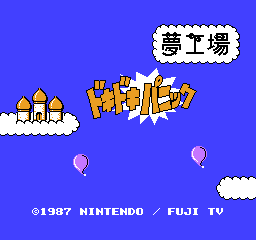 | 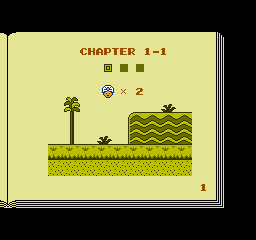 | 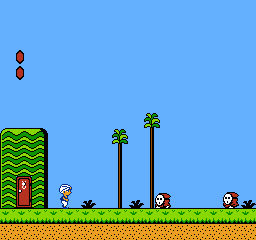 |
Afterward, Doki Doki Panic was edited to include Mario elements and then released outside of Japan as Super Mario Bros. 2 in 1988. Many aspects of the game were left unchanged, though, which lent the game a very different feel from the original Super Mario Bros. game. Also, unlike with Doki Doki Panic, you only needed to beat the game with one character, you couldn’t save your game, and you had limited continues.
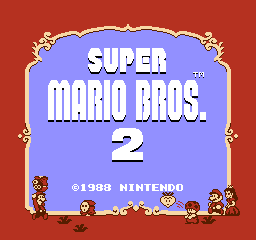 | 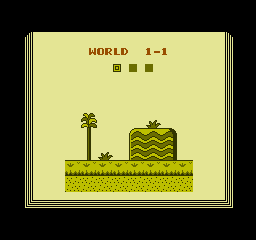 | 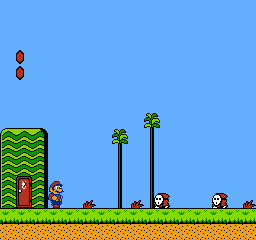 |
In 1992, this version of Super Mario Bros. 2 was released in Japan as ”Super Mario USA” on a standard Famicom cartridge.
 |  |  |
So that’s a quick review of how this one game existed as three different games over a 5-year span. Now, back to the Famitsu reviews!
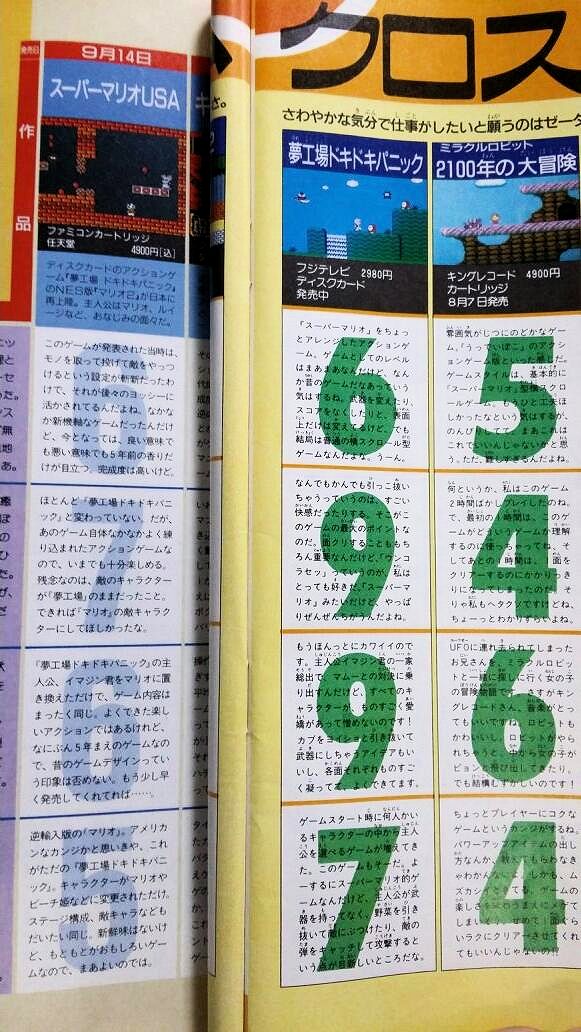 |
| (Image courtesy of Twitter user @chou_nosuke) |
It looks like Doki Doki Panic received a score of 31 out of 40, while Super Mario USA received a 24. Why the difference? Let’s take a look at the reviews and find out!
Dream Factory Doki Doki Panic Review (1987)
- 6 points: An action game that’s a slight remix of “Super Mario”. It’s a decent-enough game, but it definitely gives off an old-fashioned vibe. The weapons are different, there’s no score, and other superficial things may have changed on the surface, but in the end it’s just an ordinary old side-scroller. Hmm.
- 9 points: Pulling anything and everything out of the ground actually feels really good. That’s the biggest point of this game. Clearing stages is important too, of course, but I personally can’t get enough of that, “Heave-ho!” aspect. It may seem like “Super Mario”, but it’s actually completely different.
- 9 points: This is so incredibly adorable. Imajin and his family set out to battle Mamu, and all the characters are so absolutely cheerful and lovable! Between the turnips and items can you pull out of the ground to use as weapons and the really solid stages, it’s a very well-made game all around.
- 7 points: Games that let you pick a hero from a lineup of characters have been on the rise lately. This is one such game. Basically, it’s a Super Mario-like game, but the main character doesn’t have a weapon; instead, you pull vegetables out of the ground and hit enemies with them or catch enemies projectiles and use them to attack back. A very novel aspect, indeed.
And now let’s compare that with the reviews for Super Mario USA.
Super Mario USA Review (1992)
- 6 points: When this game first came out, grabbing things to throw at enemies was a fresh, novel gameplay feature, one which has since become a Yoshi staple. It was a pretty innovative game, but the only thing that stands out about it now is that it feels like it did 5 years ago… which is both a pro and a con. It’s a well-polished game, at least.
- 7 points: It’s almost no different from “Dream Factory Doki Doki Panic”. But since that was such a well-crafted game to begin with, it’s still enjoyable even now. I’m disappointed that the enemies are the exact same as in Doki Doki Panic, though. I wish they could’ve changed them into Mario enemies.
- 6 points: All this does is replace Imajin, the main character of “Dream Factory Doki Doki Panic”, with Mario. The game is the exact same otherwise. It IS a well-made and enjoyable game, but it’s also from 5 years ago, so there’s no getting around the feel of its old-fashioned game design. If only they had released this a little earlier…
- 5 points: Reverse-imported Mario. I expected an American-style Mario, only to discover it’s just “Dream Factory Doki Doki Panic” with Mario, Princess Peach, and others as the main characters instead. The stage layouts, enemy characters, and most everything else are the exact same. It doesn’t feel new or fresh at all, but it was a fun game to begin with, so I guess it’s okay.
For reference, Famitsu often has a slightly different lineup of reviewers each issue, and since these two issues came out years apart, it’s to be assumed that these reviews weren’t necessarily by the same people. In any case, it’s interesting to see how the reviewers share many of the same thoughts about Super Mario USA – that it feels old, that they’re disappointed that it’s not much different from Doki Doki Panic, and so on. I wonder what Japanese gamers who’d never played Doki Doki Panic before might’ve thought about Super Mario USA, though.
Anyway, that’s a look at how our version of Super Mario Bros. 2 was received when it was brought back to Japan. I’d always wondered about that, and now we know!

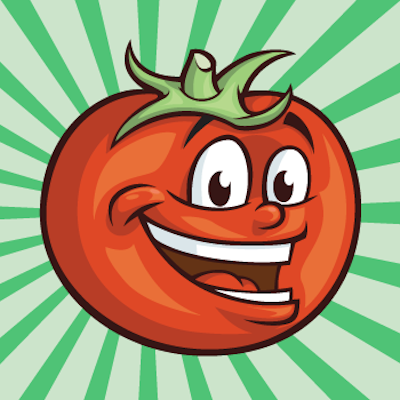
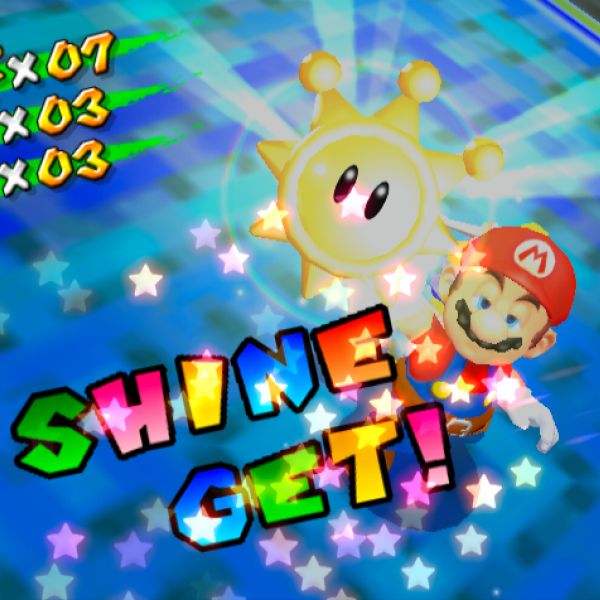
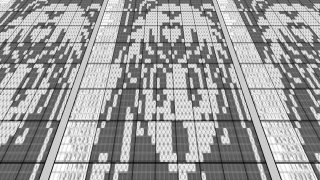
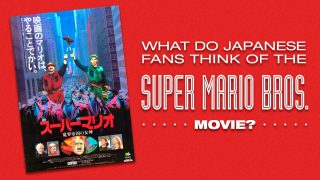
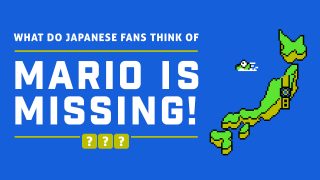
I completely agree with their reasoning though.
Yeah, I did used to wonder about that, thanks for the insight! Of course it wasn’t as well-received, it really was just a reskinning of DDP.
It still feels weird to think that Lost Levels was the real Mario 2… if there even is such a thing, definitively.
Conversely, I thought that “Lost Levels” wasn’t much to look at when I got “Super Mario All-Stars” as a kid, like: “WTF, I got this game for NES Mario games and there’s this weird game here, too. It’s just redone SMB, only a LOT harder! Why did they make a game like that?!”
Played a few levels, got pissed off, and didn’t touch it again. Just one of those times where NA and JP gaming experiences are nothing alike. ^^;
Makes sense. If a game made in 2009 came out today it would probably not get very high scores.
Evidence supports this conclusion; when Duke Nukem Forever finally came out, it was savaged by critics (Metacritic score is, what, 53?) mainly because it looks and plays like what it is: a game from 2001.
I wish it did. Played too much like a current gen game (health regen, 2 weapons)
Keep in mind that Halo: Combat Evolved was what pioneered the whole concept of replacing the limited resource in battle with ammo and weapons, instead of health (or, in laymans terms, regenerating shield HP, two guns + grenades)
So 2001 is pretty damn retro, but not retro enough for the “good” old-fashioned “start a level with two health, good luck” mojo of older shooters.
Except it doesn’t. The game we got called “Duke Nukem Forever” is a completely unrelated hodgepodge title thrown together in a year for the sake of finally putting the name to rest. The original project truly ended development years before.
Funny you say that. The Tales games we’ve gotten to this point (Graces f, Xillia) as well as upcoming games (Xillia 2, Hearts R) are old by release date standards (two years), but they’ve both done pretty well by response.
it’s so strange how many of those DDP enemies went on to become such loved characters in the mario franchise O:
Seeing those “it’s the same so it sucks” comments makes me wonder what the reviewers thought of the real Super Mario Bros. 2 (wink wink).
Completely different. Releasing a “level pack” a year later is a very different thing from releasing an almost identical game five years later (well after the next console’s already been released, even).
The international Mario 2 is so much more enjoyable than The Lost Levels in my opinion. Nintendo made such a good decision here. Doki Doki Panic would have faded into obscurity if not for becoming a Mario game. And many characters from this game, such as Shy Guys and Birdo would not become standard Mario elements if it were not for this decision as well.
Shy Guys are one of my favourite Mario characters, especially how they behave in Paper Mario.
Mario would be so different nowadays if not for this reskin.
The thing I find most amusing about this whole situation is that basically all of the Mario team staples (Shigeru Miyamoto, Koji Kondo, et al) worked on Doki Doki Panic. Meanwhile, Lost Levels was done with little to no input from a number of those people. So while business may have meant that Lost Levels was the one to get branded with the “Super Mario Bros. 2” title, it’s almost like Doki Doki Panic was the one to more accurately catch the Mario spirit in the first place.
And the Mario series today just would not be the same without Shy Guys and Bob-Ombs. No siree.
I agree about the Shy Guys, but the true origin of Bob-ombs is as follows (http://www.mariowiki.com/Bob-omb#Names_in_other_languages):
The Super Mario Bros. 2 Bob-omb and Super Mario Bros. 3 Bob-omb are technically different enemies. In Japan, the armless enemy from Super Mario Bros. 3 that would appear in later games is called 「ボム兵」/「ボムへい」 (“Bomb Soldier”), while the enemy with arms that only ever appeared in Super Mario Bros. 2 and nowhere else (I think) is called 「ボブ」 (“Bob”).
I do not know if the Bob-omb in Super Mario Sunshine is related to either of these enemies or if it is a third enemy entirely.
What about Ninjis? That one Ninji that appears at the end of Super Mario World *is* the same the enemy that appeared in SMB2, isn’t it?
“The thing I find most amusing about this whole situation is that basically all of the Mario team staples (Shigeru Miyamoto, Koji Kondo, et al) worked on Doki Doki Panic.”
Not exactly true. The only people involved in the development of Doki Doki Panic were those two that you’ve mentioned (Kondo and Miyamoto) and Miyamoto wasn’t even the lead designer. Miyamoto merely helped out Kensuke Tanabe, who was the actual lead designer of Doki Doki Panic and eventually worked on the U.S. localization.
http://www.wired.com/2011/04/super-mario-bros-2/
“Meanwhile, Lost Levels was done with little to no input from a number of those people.”
This is wrong. Lost Levels was conceived by Miyamoto’s team when they were working on Vs. Super Mario Bros. While adjusting the game’s difficulty for arcade play, they came up with a bunch of levels that they deemed too hard for the game and eventually they decided to release them as part of a sequel. It’s pretty much a ROM hack made by the original developers.
http://youtu.be/DNa0M1gymgA?t=3m47s
Making a level pack doesn’t necessarily require the original figureheads, because you’re building off of their work. Doki Doki Panic is a totally different game from Super Mario Bros.; it’s a Mario spinoff at best, because just like with Zelda II, reverting to and improving on the original gameplay style makes the previous work a little out of place. Perhaps there was an attempt to make a Doki Doki Panic successor, like with Zelda II?
I’m puzzled about how Famitsu scores are calculated; is each score given by a different reviewer and the four reviewers’ scores are added up to give a total?
Yep, exactly that.
Thank you! I love the Other Views articles, by the way.
I remember a French reviewer (now working in Gamekult.fr) who actually worked for the Famitsu in the late nineties and wrote a lot of its reviews..
But he says that the actual numeric scores are decided in advance by their superiors.
Seems it’s not nearly as good as people make it to be… gaming journalism corruption is something of an international phenomenon, it seems 🙁
Huh, that’s interesting. I can’t say I’m too surprised, since they probably want to keep scores reasonably consistent and varying reviewers’ tastes could lead to hugely disparate scores for different (equally-good) games … but it also makes things less fair. There are fewer truthful opinions from each reviewer and the readers aren’t informed as accurately.
Uhm… dude. The Famitsu is famous for it’s corruption and bullshit reviews. Don’t sugarcoat this with phrases like “It’s less fair, but understandable”!
If you want some “proof” than look at the ‘Final Fantasy 13’-series. Their scores for this trilogy are like 40 (perfect score) 39, 38…
Which is better than any other FF game from the past.
Fans and sale numbers disagree, of course. Not just in the west, but in Japan as well.
The punchline here is: Famitsu is being paid for good reviews. And that’s an open secret more or less.
What really, really irks me about their review of Super Mario USA is that while each critic points out that the game is exactly the same, it really isn’t. With Super Mario Bros. 2 they not only added the ability to run, which significantly alters the feel of the game, but also an entirely new boss to fight in World 5, Clawgrip. These guys either had poor memories of Doki Doki Panic, or they didn’t really play all the way through Super Mario USA (i.e. no warp zones). Either way, it did not deserve such a significantly different score.
I also found it interesting that none of them mentioned it’s origin as the Western version of Super Mario Bros. 2; I know in 1992 a lot Japanese fans didn’t know that we got a different Mario game, but I expected Famitsu to be more knowledgeable about that sort of thing. I have an old book of NES tips from the early 90’s that mentions Mario 2 being based on a game called Dream Factory, so even back then it wasn’t uncommon knowledge among American gamers.
One of them mentioned that it was an “Reverse-imported Mario”.
“I have an old book of NES tips from the early 90′s that mentions Mario 2 being based on a game called Dream Factory”
Super Mario 2’s origins in Doki Doki Panic didn’t seem to be very common knowledge back in the early 90’s, so it’s interesting that there was at least one NES book that made reference to that fact. The earliest I recall discovering the Mario 2/Doki Doki Panic connection was in the year 2000, while reading Gamespot’s History of Mario.
I’m pretty sure “Mario Mania,” a Super Mario World player’s guide/Mario retrospective, mentioned this. At the very least, I’m sure there was a small sidebar that discussed the Japanese Super Mario Bros. 2 (before it was ever branded “The Lost Levels”).
“Super Mario 2′s origins in Doki Doki Panic didn’t seem to be very common knowledge back in the early 90′s, so it’s interesting that there was at least one NES book that made reference to that fact.”
It wasn’t very common knowledge, but by the late 90’s it wasn’t uncommon either. As a webmaster of a popular NES website in the late 90’s, I hung out in a lot of Nintendo chat rooms back in the day (we’re talking java applet days!), and AFAIK most of us were aware of the fact that our SMB2 wasn’t the original one.
I found the book I was talking about, it was Consumer Guide’s More Strategies for Nintendo Games: http://tinyurl.com/jw7sfq3
I think How to Win at Nintendo Games by Jeff Rovin might also briefly mention Doki Doki Panic. I wish I had time to look for either book so I could post picture proof…but I gotta sleep so I can work tonight, so you’ll just have to take my word for it! 🙂
Never mind the above post, I found a scan of the page I was talking about! Check it out: http://i.imgur.com/c0drxj7.jpg
This is actually from an earlier book from Consumer’s Guide–from 1989!
Wow that’s really cool! Guess the answer as to why Mario 2 was so different was available earlier than I thought, if you knew the right source to turn to.
The Mario Mania book also mentioned it, if I remember right. Or an early issue of Nintendo Power. I forget which.
And had Doki Doki Panic been released in America and Europe in 1992, I can guarantee you the reception would’ve been a pretty resounding “Why did they bother? We got this exact game years ago just with different graphics!”
The run doesn’t make the game different so much as it makes the game easier. The-1987-game-known-as-Super-Mario-Bros.-2 is 90% the same, so it seems meanspirited to be so judgemental over a game that had to have been played and forgotten years ago.
Not only is it 5 years after Doki Doki Panic at the time of release, it’s really an eon in Mario terms. Both Super Mario Bros. 3 and even Super Mario World are old news by 1992. This Famicom version of Super Mario USA wasn’t even out a full year before the SNES remake as part of Super Mario All-Stars was released.
Very fair point.
Yep, I’m surprised to learn that the Japanese release of Super Mario USA was over three years later than all other regions, to the point where they associated the “grab and throw” mechanics with Yoshi by then. (I also once saw the game derided for it being too much like Kirby’s Dream Land in that respect, another 1992 game.)
Did anyone else notice that the screenshot they used in DDP is an area that doesn’t appear anywhere in the final game?
Also, Famitsu sure isn’t harsh with games made by their ad clients anymore, lol
Hey, you’re right! That level is definitely not in the final game. Maybe it’s time for Nintendo to finally release Super Mario Bros. 2: The Lost Levels!
What strikes me as interesting is how often the reviewers compare Doki Doki Panic to Super Mario in thee DDP review.
Not particularly surprising… in Japan, DDP was always seen as “the next big thing from the Super Mario Bros. developers”. This has kinda been corrupted by Western fans to mean that this game is the “true” Super Mario Bros. 2. Thing is, names are all marketing. DDP is far more of a Mario game than Zelda II is a Zelda game, but which one has the correct theming? Donkey Kong 3 also comes to mind, a radically different game that really couldn’t have worked without the Donkey Kong character.
I’ve actually heard a few rumours of the original alpha/beta development of Doki Doki Panic actually being Super Mario Bros. 2, and then it being dolled up into a licensed game, and then dolled back down into Super Mario Bros. 2 for worldwide audiences.
I don’t know how accurate that is, though.
It wasn’t SMB2 (since SMB2/The Lost Levels was already released) but it did start as a vertical-scrolling Mario game.
http://www.wired.com/2011/04/super-mario-bros-2/
It says the tech demo was supposed to be “Mario-style”, but I don’t think it was an actual Mario game
That’s what it seems like from that article. Though I swore I read somewhere that it was a Mario game, that could just be my imagination
I found it interesting that DDP was repeatedly referred to as “Mario-like;” usually SMB2/USA is noted for being a departure in the usual formula.
This makes wonder how the Japanese perceive Shy Guys and Birdos; have they been accepted as part of the Mario family, or are they still/primarily seen as DDP throwbacks/cameos?
They’re probably seen as Mario characters. They were actually created by Nintendo, unlike the four main characters which are owned by Fuji TV. Not to mention Bob-Ombs and Pokeys already appeared in Mario games as soon as SMB3 and SMW.
I still wonder if Birdo is canonically guy, gal, or indeterminate at this point, heh. (And why on earth the GBA remake lets you pick up and throw Birdo’s ribbon, even though this doesn’t seem to do anything that I can tell from watching videos on it, not even damage something it gets thrown at.)
I wonder what criteria Famitsu reviewers base their scores on exactly. They’re all very sporadic.
Seems just slightly harsh; at its core, yes, it’s the same game, but there were a number of refinements to graphics, gameplay, and sound that went overlooked.
I miss the days when Famitsu used to be brutal when it came to reviewing games…
I’m surprised none of the reviews brought up the removal of the save feature. I mean, that seems like a pretty sucky change, although it might be justified; Dokidoki Panic was a Disk System game, so Nintendo of America probably didn’t feel like implementing a battery on the cartridges. Not sure why the hell they went with limited continues, though.
the save feature isn’t as good as you think it is. I have it, and it HAS to have the save feature, because to unlock the ending, all the characters HAVE to finish every level, unlike Mario 2 where you beat Wart, it’s over. In Doki Doki, nope, you don’t get the ending until every character finishes every level, thus forcing you to save. Basically, Nintendo of America made an easy game even easier by allowing you to have the ending with only one character, and skipping levels through warping, something Doki doesn’t let you do. When you beat Wart, you haven’t freed the kids, until every single level with every single character is cleared- it’s a pain in the butt!!!!
Well, the game’s meant to be played with only one continue anyway, just like Super Mario Bros.. The saving’s only in the original because you’re expected to play the thing four times. Same with the original Super Mario Bros. 2.
I like how Westerners say that Doki Doki was the real Mario 2, because Miyamoto spent more time developing it than he did Lost Levels, not realizing that Super Mario Brothers 2 (Japan) came out a year and a month before Doki Doki did. He worked on SMB 2 slightly, and Doki Doki more, but look at his other creation of Zelda, and notice how the second quest is essentially a harder first quest. That was the obvious intention of Super Mario Brothers in Japan, they wanted a similar, but harder second quest for Mario, so that’s what they paid him to do. He was paid more to develop an entire new game, spending time doing what he wanted, thus Doki Doki was born. Then, Mario 3 in Japan was developed more so by him, and he instilled features from both franchises into the Mario one, making Mario 3 the best- and until the Wii came out, highest selling stand alone game in the history of video games.
Well, it’s probably a lot easier to work on a level pack than to design a new game system and level design for it (and everything else). Not only that, but about half the game was already released through VS. Super Mario Bros. a little while before, and I’m not sure this is really noticed for the purposes of interviews (either by developer or by reader).
I don’t really believe people who say the original Super Mario Bros. 2 would have been a failure here. At the time, all you had was Super Mario Bros., there was no Super Mario Bros. 3 and World to change the meaning of Mario so significantly. When the second Super Mario Bros. 2 came out, there were a lot of people who had wanted more of the original. I feel like it would have been a good little success, at the least.
In hindsight, all people can do is bash it for its difficulty, but then go to praise something like Kaizo Mario for a MUCH higher level of difficulty. (It doesn’t matter that Kaizo is a free fanmade hack, as people criticize SMB2 as a game, not as a product.)